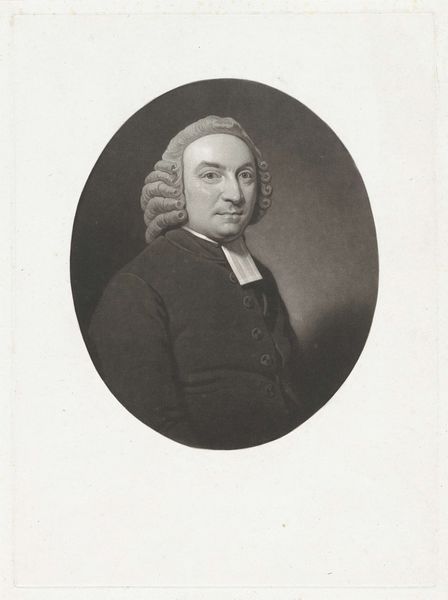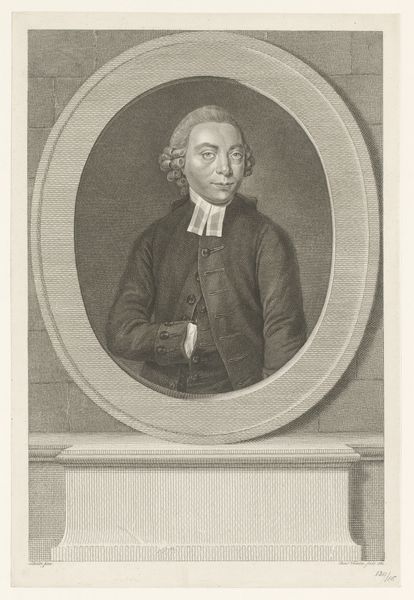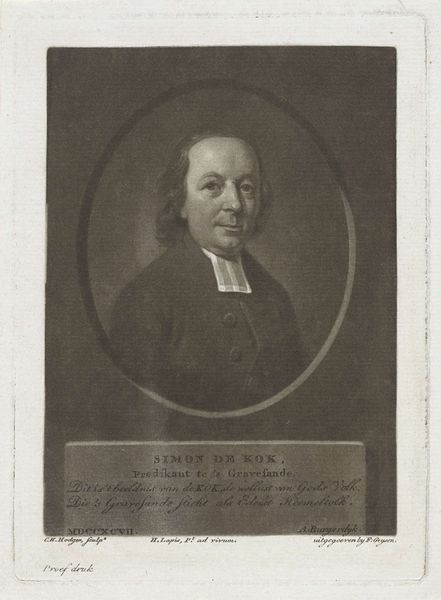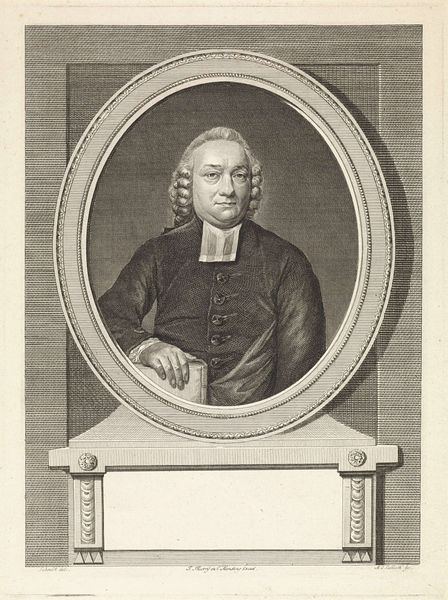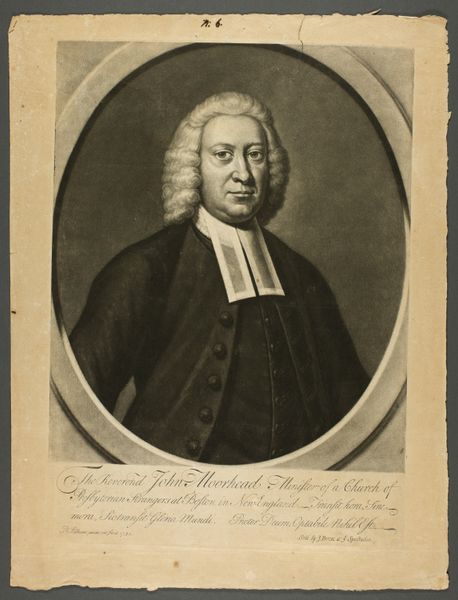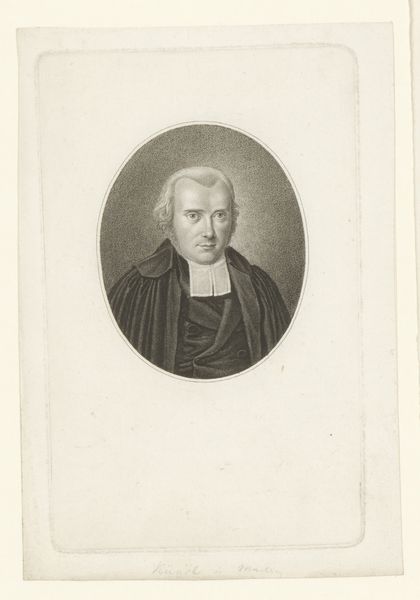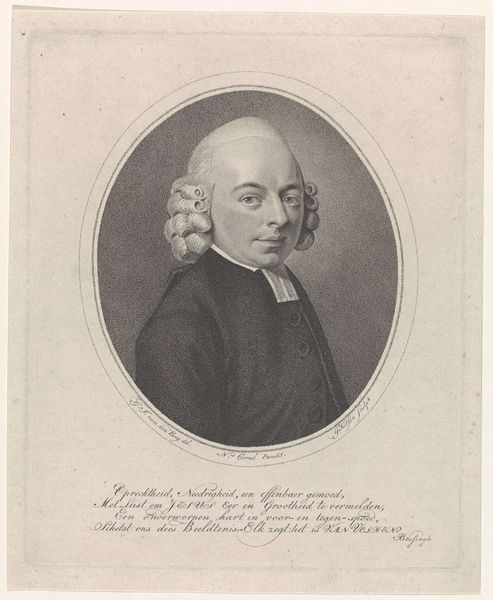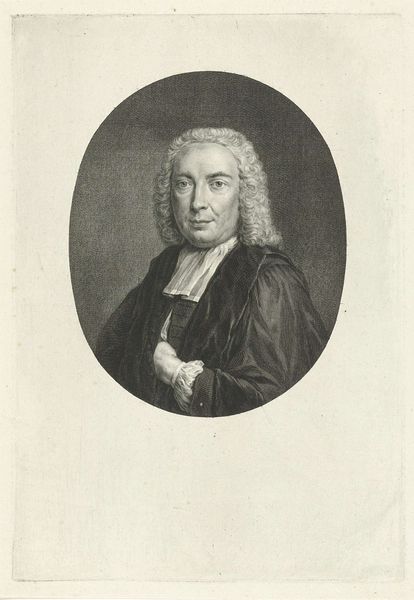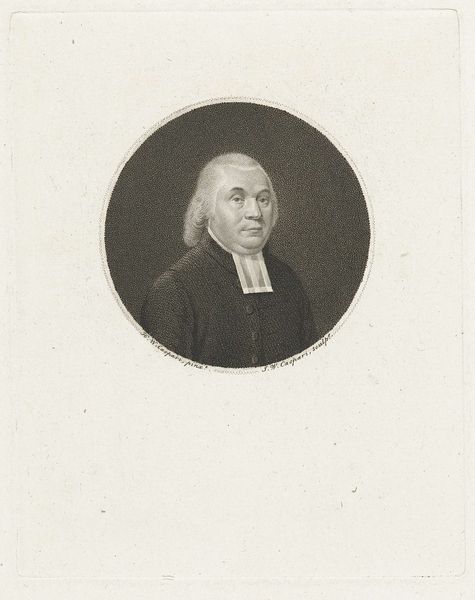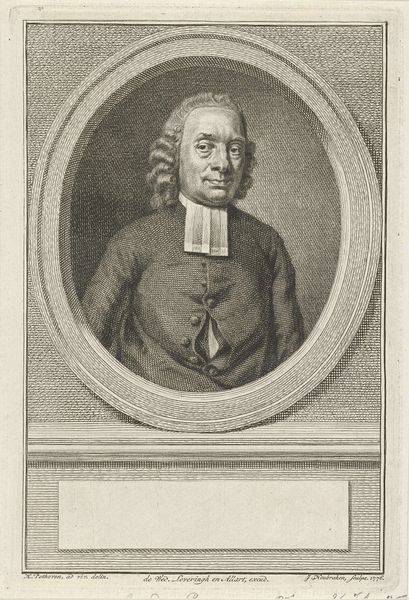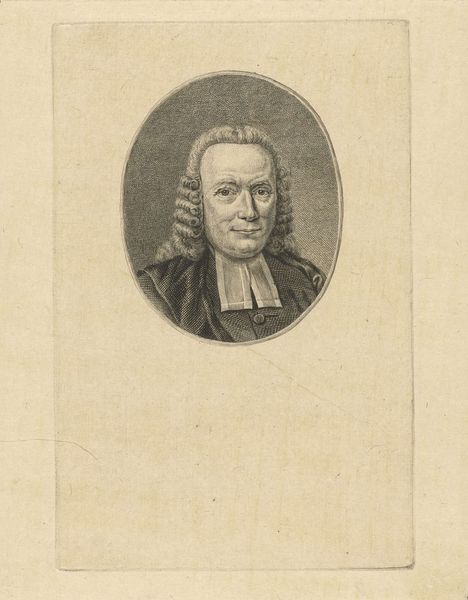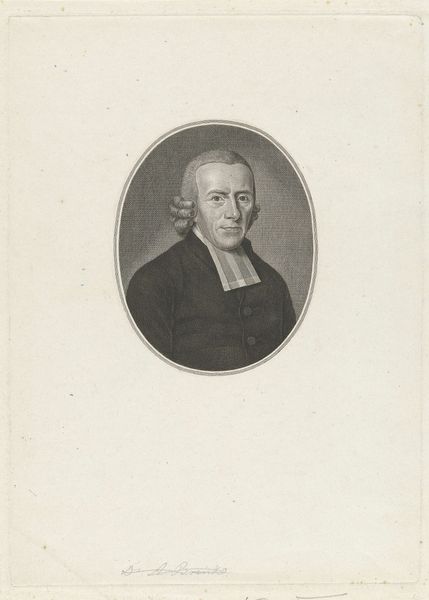
drawing, pencil
#
portrait
#
drawing
#
neoclacissism
#
charcoal drawing
#
historical photography
#
pencil drawing
#
pencil
#
academic-art
Dimensions: height 375 mm, width 270 mm
Copyright: Rijks Museum: Open Domain
Editor: This is Frederik Christiaan Bierweiler's "Portrait of Gerhardus de Haas," created around 1806 using pencil and charcoal. It has such a formal, almost severe feeling. The oval format seems to enclose him, and he is framed to almost force us to have an audience with him. As someone versed in art history, what symbolic weight do you think this image carries? Curator: Indeed, that sense of formality is crucial. Look at the sharp contrast of the white collar against the dark coat. In its time, black clothing and powdered wigs spoke of authority, particularly within religious and intellectual circles. But the symbolism goes further. What do you notice about his gaze? Editor: He's looking directly at us, quite intently, almost challengingly. Curator: Precisely. This direct gaze, common in portraiture, demands recognition, but within a Neoclassical framework that emphasizes rationality and control. Consider, then, what the portrait is *not* showing us: any elaborate setting, personal items, or overt expressions of emotion. What effect does this have? Editor: It seems intended to strip away anything that might distract from the essential character of the man. Very austere. Curator: Exactly. Bierweiler utilizes visual symbols of authority but avoids grandeur, creating an image of reasoned leadership. The light, primarily focused on his face, highlights his intellect and judgment. It invites the viewer to see him not as an individual, but as an embodiment of societal roles. It reveals what society valued and venerated through imagery. Editor: So the portrait is not just about de Haas but also about the values that the artist wanted to project. That changes how I see the whole composition. Curator: Precisely. By analyzing symbols and their historical context, we decode the layered meanings within. What felt at first to you like austerity perhaps reveals itself now as the weight of social responsibility and an era of revolutions and upheavals. Editor: Definitely food for thought! I’ll look at portraits very differently now.
Comments
No comments
Be the first to comment and join the conversation on the ultimate creative platform.
